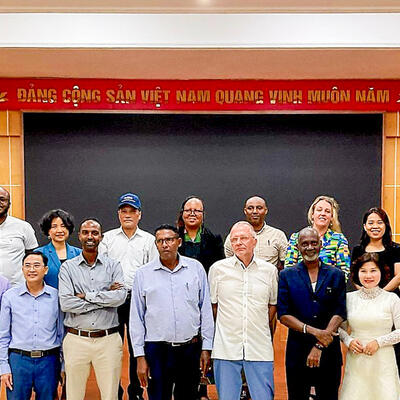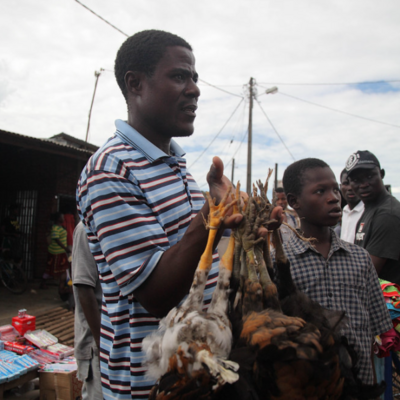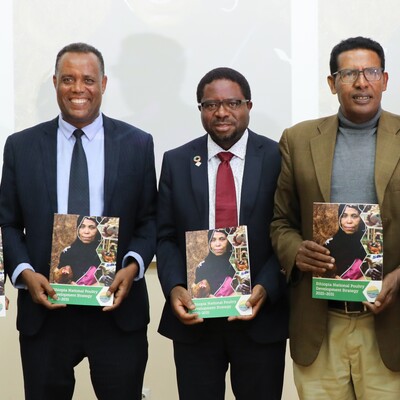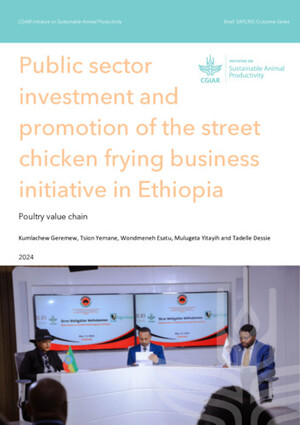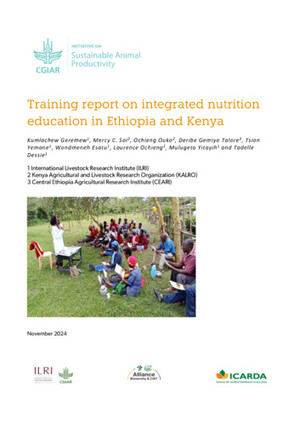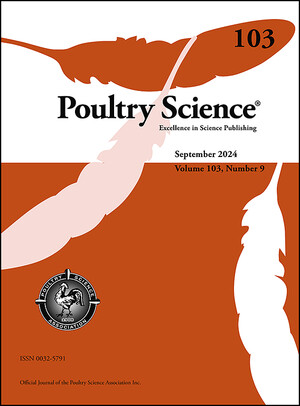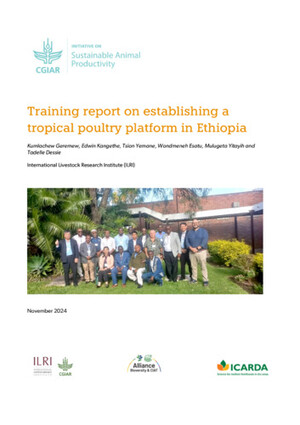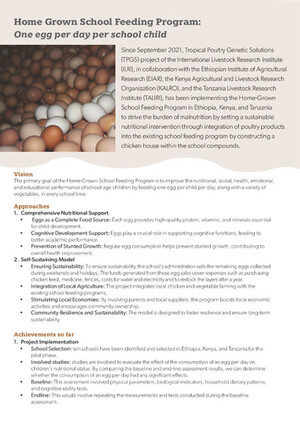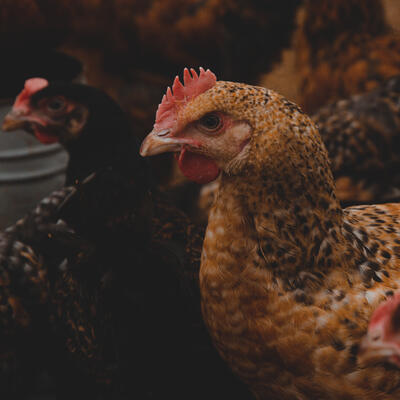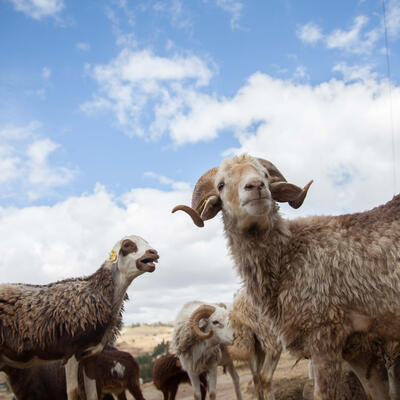
Voices on chicken genetics: Co-creating gender strategies that empower farmers
Julie Newton and Katrine Danielsen are both gender in agriculture specialists working at the Royal Tropical Institute (KIT) in Amsterdam, the Netherlands. They form the team devising the gender strategy for the African Chicken Genetic Gains (ACGG) program. In this interview they reflect on their own aspirations, what about the project has impressed them so far and what’s next in their work with ACGG.
Why is the ACGG gender strategy important?
Katrine Danielsen (KD): Since ACGG is a research for development project, we hope that the gender strategy will be used beyond the project period. We currently have data collected on poultry genetics and productivity but no data has been collected on gender relations despite women’s empowerment being an overall objective of the project. Our hope is to see gender integrated into the mainstream of ACGG’s technical research so that in the future there is data to analyse the short- and long-term gender relations outcomes of introducing improved chicken breeds as a basis for improving the lives of poultry farmers.

Julie Newton (credit: ILRI).
What are the different entry points for gender work in the poultry sector?
Julie Newton (JN): There are different entry points throughout the entire project cycle and along the poultry value chain. Our involvement in the projects seeks to support ACGG (through the gender strategy process) to enhance the gender perspective throughout. Although domestic poultry production is cross-culturally associated with women, it is important to move away from the assumption that poultry projects are automatically about women farmers and will automatically benefit them. What we try to do is look at the whole household and intra-household social relations.
There are specific entry points in this project such as:
- What are the specific chicken traits that are preferred by women or men?
- When chicken rearing becomes profitable, how is the profit distributed? There is a risk of backlash because intensification of production and commercialization often results in marginalizing women in favour of men. In that case the project would be doing more harm than good but this can be prevented by engaging men and organizing women etc.
- From a value chain perspective, there are also constraints that might differ between women and men and the project needs to analyse how men and women experience these different constraints (e.g. in access to inputs and services, processing etc at different points of the value chain) so that the household can benefit from the new technologies introduced. The national and community innovation platforms are a key entry point within the project to both analyse and address women and men’s different needs through different strategies and modes of support.
- Within the value chain, we want to understand how limited access to markets can be and is a key barrier to women. Whoever goes to the market controls income from the sale of chicken meat and eggs. So this is an important entry point.
What has been eye-catching from the work you have undertaken so far?
KD: For me it is the difference in what women and men described as successful chicken rearing and the opportunities this would bring about: Women talk about recognition, independence, having the power to make decisions without asking permission etc. Men, on the other hand, talk much more about earning more, scaling out the business etc.
It was interesting because the project, from the onset, has stated the objective to empower women but little has been done to understand what that means. We need to adapt the gender strategy to fit the context of the aspirations of both female and male farmers.
What do you see as the biggest challenge and opportunity for gender work in each of the ACGG countries and for the program as a whole?
JN: Two of biggest challenges which are also key opportunities for ACGG include: First, how to go about capturing the local understandings of empowerment and second, interrogating assumptions that increased poultry production will automatically translate into nutritional benefits.
KD: One of the biggest challenges is to reconcile different understandings about women’s empowerment. The Bill & Melinda Gates Foundation funding means there is much aspiration for women’s empowerment but we found that in some places there is a feeling on the part of country stakeholders that the international discourse on women’s empowerment is being imposed. This has given us with an opportunity to encourage scientists in all countries to explore what women’s empowerment really means in different local contexts and how that can inform project initiatives to succeed. This is along the lines of what the gender strategy in this project can inspire beyond the project itself.
JN: We cannot yet see how poultry and its products are being used to improved nutrition through consumption or income pathways. If more chickens are produced, how much of its products (egg and meat) are consumed in the household and by whom? We have learned that the meat is not always consumed (except for special occasions) or shared equitably within the household, although eggs are being consumed more regularly. We learned that there are differences about who decides when a chicken is slaughtered for consumption, taken to the market, and when and by whom eggs consumed. These dynamics also differ across the countries. The partnership between ACGG and the Improving Nutrition Outcomes Through Optimized Agricultural Investments (ATONU) initiative in Ethiopia and Tanzania is an exciting opportunity to better understand this impact pathway, particularly how gender relations influence the use and benefits from poultry products.
JN: Initially some scientist amongst the country teams were wondering if the process of developing a gender strategy had not started too late. But we have found a lot of appetite for how we can integrate gender concerns in project implementation from now onwards. Other key opportunities lie in the innovation platforms. These were originally focused on the national level but now there is increasing attention on the community level and feedback loops between the two.
KD: The concept of innovation platforms in ACGG seems to focus primarily on half-yearly meetings. We (the gender team) think these are a ‘moment’ that linked to something larger. This means linking the events to other activities which find out with farmers (women and men) what their constraints are, how they can get together, the innovations they want to share etc. We want to support ACGG to ensure that women farmers get the opportunity to prepare themselves to voice their concerns ahead of the meetings. And following the meetings much needs to be done to ensure that whatever issue raised is addressed, and to ensure that linkages between national and community platforms are improved.
JN: We started off distilling the differences between mainstreaming gender into technical research and day-to-day operating work. We have found a tension between long-term research versus the need to use data quickly for adaptive programing. As we make suggestions for integrating gender into the mainstream of the project’s technical data collection, we also need to ensure that there is more regular reflection to improve programing.
KD: And where possible, we will try to integrate gender in all program processes and tools. For instance the main tool in ACGG is the on-farm testing tool but there is very little data that is gender disaggregated, and the tool does not deal with use of resources and decision-making in the household which may require different tools. We need to find feasible openings and motivation to adapt the tool and/or develop new tools and ensure that such change is communicated well to all staff including to enumerators and field assistants who are actually collecting the data in the communities.
What are the next steps in your work with ACGG?
KD: We are currently busy supporting country teams deal with some issues they are facing such as:
- Improving the meaningful participation of women in the innovation platforms , both in terms of how many women attend and the extent to which there is space for women participants to raise their voice.
- Exploring how innovation platforms are facilitated to provide for such space and ensure that women’s expressed concerns inform discussions and decisions.
- Ensuring that gender concerns are part of the mainstream discussions in these platforms. For instance, in the feed working groups we would like to see some reflection on how mobility is a real constraint for women (who have different constraints than men of accessing markets).
Innovation platform meetings will take place in all three countries in August-October and it would be great if some progress is made.
The next obvious step is the gender validation workshop. We are busy drafting the final version of the strategy to be able to present it, and at the workshop we will develop an implementation plan for each country and the overall program with a joint learning agenda.
JN: We also hope to give the ACGG teams a tentative draft of the template of the implementation plans and some synthesis of the country trip reports so they can think of it ahead of the workshop, though we know they are very busy and we expect to get their full attention when we are together in one room.
KD: We expect that decisions will be made during the validation workshop – such as on an accountability mechanisms and budget. We anticipate the overall gender strategy implementation plan and country implementation plans will serve as the main mechanism for fleshing this out and as a monitoring tool.
Final thoughts?
JN: At KIT, we believe in co-creation, in developing things together. At the end of the day the final gender strategy will be a document. Through the process we have embarked on, we hope that the approach of co-creation will keep the momentum going afterwards and that the country teams can bring the gender strategy to life. However, without leadership from the top and more in-house gender capacity, there is a real risk that it could remain another paper document.







